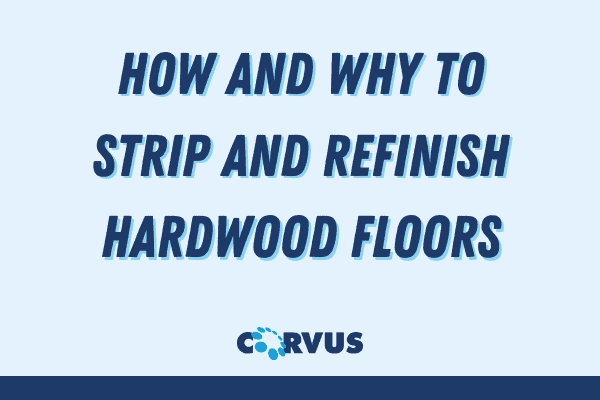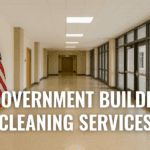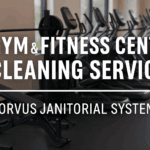As far as home and office improvement projects go, stripping and refinishing hardwood floors is definitely high up on the list. It’s something that’s relatively easy to take on – you can do it yourself or find several local hardwood floor specialists to do it for you. Whichever you choose, there are many benefits to stripping and refinishing your hardwood floors. And if you’re feeling handy or you’re willing to learn, one of those benefits is that you can do it on your own, save money, and learn a new and valuable skill.
Why Strip and Refinish Hardwood Floors
Stripping and refinishing hardwood floors gives you the chance to restore old, worn, or otherwise damaged flooring in your home or office. It is also the perfect time to change the color with a quick and easy stain. Refinished hardwood floors increase the property’s value, makes the room more visually appealing, and makes them easier to keep clean. Dirt and dust can settle in as hardwood floors age. Stripping and refinishing will help you remove allergens, eliminate pesky splintering wood pieces, and give you a smooth finish that is easy to clean and maintain.
How to Strip and Refinish Hardwood Floors
Stripping and refinishing your hardwood floors will take some patience and a fair amount of elbow grease, but the results make it worth it. Using the floors as the jumping-off point to redecorate and breathe new life into your space can make it feel brand new. There are different levels and stages of refinishing hardwood floors, so we’ll start with the easier ones. If you only have a handful of minor scratches, dings, or a worn, dull finish, you might be able to get away with quickly buffing and adding a new coat of varnish or polyurethane to your hardwood floors.
But if your hardwood floors are in dire need of a full makeover, the process is still manageable and rewarding. Plus, doing it yourself can save you thousands over paying an expert to do it for you. On average, professionals charge between $3 to $4 per square foot to refinish floors. This means that a 2,000-square foot space could cost as much as $8,000. If you’re willing to do the work yourself instead, it would cost closer to $700 instead.
Steps Involved in Stripping and Refinishing Damaged Hardwood Floors
If you don’t fall into the category of a quick repair, here are the steps you’ll want to follow to breathe life back into your hardwood floors:
1) Prep the room by taking out furniture and rugs, covering vents and electrical boxes with painter’s tape, and gently removing the base molding with a pry bar
2) Number the molding pieces as you go so it’s easier to put them back in the right place when you’re done
3) Use wood filler to patch and repair larger holes or cracks or wood patch filler on individual spots if the damage is minimal
4) Let the filler dry completely
5) Use a damp rage to wipe down the floor and get rid of any remaining dust or debris; let the floor dry again before sanding
6) Slowly and cautiously use a drum sander to sand the floor (remember your mask and eye protection, too)
7) Buff the floor to remove any small sanding marks that were left behind and give the floor a smooth finish
8) Prep the room for stain or sealer by wiping away any dirt, dust, or hair on the floor or walls so they don’t affect your finish
9) Apply stain if you want to change the color (make sure the room is well ventilated first and wear your respirator mask)
10) Once the stain is dry (or you decided to skip the stain), the last step is sealing the floor (usually with polyurethane) to protect it from further scratches and water damage
Tools and Materials You’ll Need
Depending on the level of damage, size of the room, your goals, and other individual factors, the process may look slightly different. But for the most part, the tools and materials you’ll need will likely stay the same. Let’s start with the rented items first. Unless you already own them or you have a handy family member or neighbor, you can rent a drum or belt floor sander and an edger sander from your local home improvement store. These are the biggest items you’ll need. From there, you’ll want to gather or go buy:
–A small pry bar for the base molding
–Needle-nosed pliers to remove any nails or staples in the floor
–A hammer to nail down any loose boards
–Painter’s tape and plastic sheets
–Wood filler
–Spackle knife (you may want to buy a few different sizes, but if you already have one and don’t want to buy more, the one you have on hand should work fine)
–Protective goggles or other eyewear and respirator masks
–Sandpaper (40, 60, 80, and 120-grit to fit the different sanders)
–A sanding pole
–A 120-grit sanding screen
–An industrial-level vacuum or shop vac
–Tack cloth
–Denatured alcohol
–A smooth foam roller
–Polyurethane or a similar hardwood floor sealant
–Steel wool pads and rags
–An oil-based stain and stain applicator pads are optional depending on whether or not you are happy with the current color of your hardwood floors.
Corvus Janitorial Services
At Corvus, we are dedicated to health and safety improvements. If you are preparing to strip and refinish your hardwood floors yourself, make sure you have all of the safety equipment you need. If you are renting sanders, buffers, or other equipment, ask the hardware store for guidance on how to use them. You can also find instructional videos on YouTube to watch before you begin. Doing your research before you get started could help you avoid costly mistakes like having to start over or having to hire a professional to fix any damage. For more information on improvements that you can make, the services that we offer, and the proper protocols for cleaning and disinfecting, visit the Corvus blog page.













